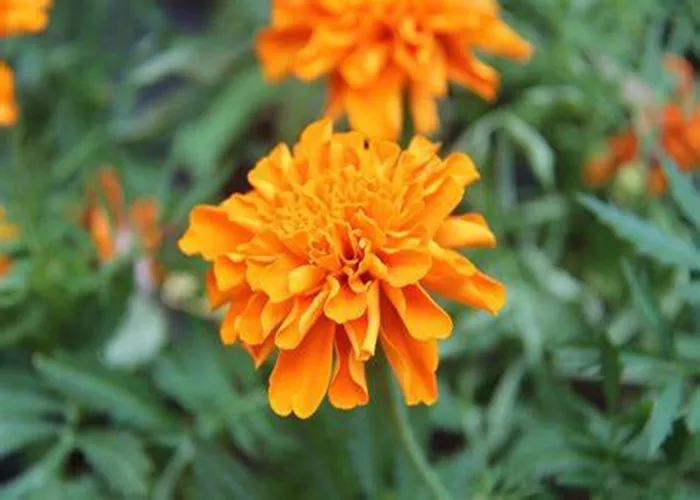Germinating flower seeds quickly and efficiently is a crucial skill for any gardener looking to establish a vibrant and colorful garden. Whether you’re a seasoned professional or a beginner, understanding the right techniques and conditions for seed germination can significantly improve your success rate. This guide will walk you through the process step-by-step, ensuring you have the knowledge and tools to germinate your flower seeds rapidly and with minimal effort.
Understanding Seed Germination
Seed germination is the process by which a seed sprouts and begins to grow into a new plant. It’s a critical stage in the life cycle of a plant, and getting it right can have a profound impact on the health and vigor of your garden.
When seeds germinate, they rely on internal stored nutrients to fuel their initial growth. These nutrients are accumulated during the seed’s development and are used to support the emerging seedling until it can photosynthesize on its own.
Importance of Optimal Conditions
To germinate seeds quickly, you need to provide an environment that is conducive to growth. This includes the right temperature, moisture, light, and soil conditions. Each type of seed has its own specific requirements, but there are some general principles that apply to most seeds.
1. Temperature: Most seeds germinate best at temperatures between 68°F and 86°F (20°C and 30°C). Maintaining an optimal temperature can significantly speed up the germination process.
2. Moisture: Seeds need moisture to soften their seed coats and allow the embryo to expand. However, too much moisture can lead to rot. The key is to keep the soil moist but not waterlogged.
3. Light: Some seeds require light to germinate, while others prefer darkness. Knowing the light requirements of your specific seeds is essential for successful germination.
4. Soil: The type of soil you use can also affect germination rates. Well-drained, fertile soil that retains moisture but doesn’t become waterlogged is ideal.
Step-by-Step Guide to Germinating Flower Seeds Quickly
Now that you understand the basics of seed germination, let’s dive into the specific steps you need to follow to germinate your flower seeds quickly.
Step 1: Prepare Your Seeds
Before you begin the germination process, it’s important to prepare your seeds properly. This includes:
1. Selecting Healthy Seeds: Choose seeds that are free of damage, mold, or other signs of disease.
2. Scarification: Some seeds have hard outer coatings that need to be softened or removed before they can germinate. This process is called scarification. You can scarify seeds using a file, sandpaper, or a knife.
3. Stratification: Some seeds require a period of cold, moist conditions to break dormancy. This process is called stratification. You can simulate these conditions by placing seeds in a moist medium and refrigerating them for a few weeks.
Step 2: Choose Your Germination Method
There are several methods you can use to germinate your flower seeds. The method you choose will depend on the type of seeds you’re germinating and your personal preferences.
1. Paper Towel Method: Place seeds on a damp paper towel.Fold the towel over the seeds and place it in a sealed container.Place the container in a warm, dark place.Check the seeds daily to ensure the paper towel stays damp.Once seeds sprout, transfer them to soil.
2. Soaking Method: Place seeds in a container of water and let them soak for a few hours or overnight.Drain the water and place the seeds on damp paper towels or in pots of soil.Keep the soil or paper towels moist and place in a warm, dark place.
3. Direct Sowing Method: For seeds that require light to germinate, you can sow them directly in the garden or in pots of soil.Lightly cover the seeds with soil and water gently.Place in a sunny location or under grow lights.
4. Germination Chamber: A germination chamber provides a controlled environment with optimal temperature, humidity, and light conditions.Place seeds in pots of soil or on damp paper towels inside the chamber.Follow the manufacturer’s instructions for setting the optimal conditions.
Step 3: Prepare Your Soil
The soil you use for germinating seeds is crucial. It should be well-drained, fertile, and free of contaminants. You can use a seed-starting mix, which is specifically designed for germinating seeds.
Fill pots or trays with the seed-starting mix.
Water the soil lightly before planting the seeds.
Avoid overwatering, as this can lead to rot.
Step 4: Plant the Seeds
Plant seeds at the recommended depth, which is usually around the thickness of the seed.
Space seeds according to the package instructions to avoid overcrowding.
Cover seeds lightly with soil and water gently.
Step 5: Provide Optimal Conditions
Once your seeds are planted, it’s essential to provide them with the optimal conditions for germination.
1. Temperature: Maintain a temperature between 68°F and 86°F (20°C and 30°C).
2. Moisture: Keep the soil moist but not waterlogged. Use a spray bottle to water lightly if needed.
3. Light: Place seeds in a location that receives the appropriate amount of light for your specific seeds. If seeds require darkness, cover them with a dark cloth or place them in a sealed container.
Step 6: Monitor and Care for Seedlings
Once seeds begin to germinate, it’s important to monitor and care for them properly.
Remove any coverings once seeds sprout and need light.
Water lightly and frequently to keep the soil moist.
Provide adequate light, either from natural sunlight or grow lights.
Thin seedlings if they become overcrowded. This will allow them to grow more vigorously.
Conclusion
Germinating flower seeds can be a rewarding experience that allows you to grow beautiful plants from scratch. By following the steps outlined in this guide and paying attention to the specific requirements of different seed types, you can speed up the germination process and increase your chances of success.
Remember, patience is key in the budding process. While it may take some time to see results, the satisfaction of watching your flowers grow and bloom is worth the wait.


